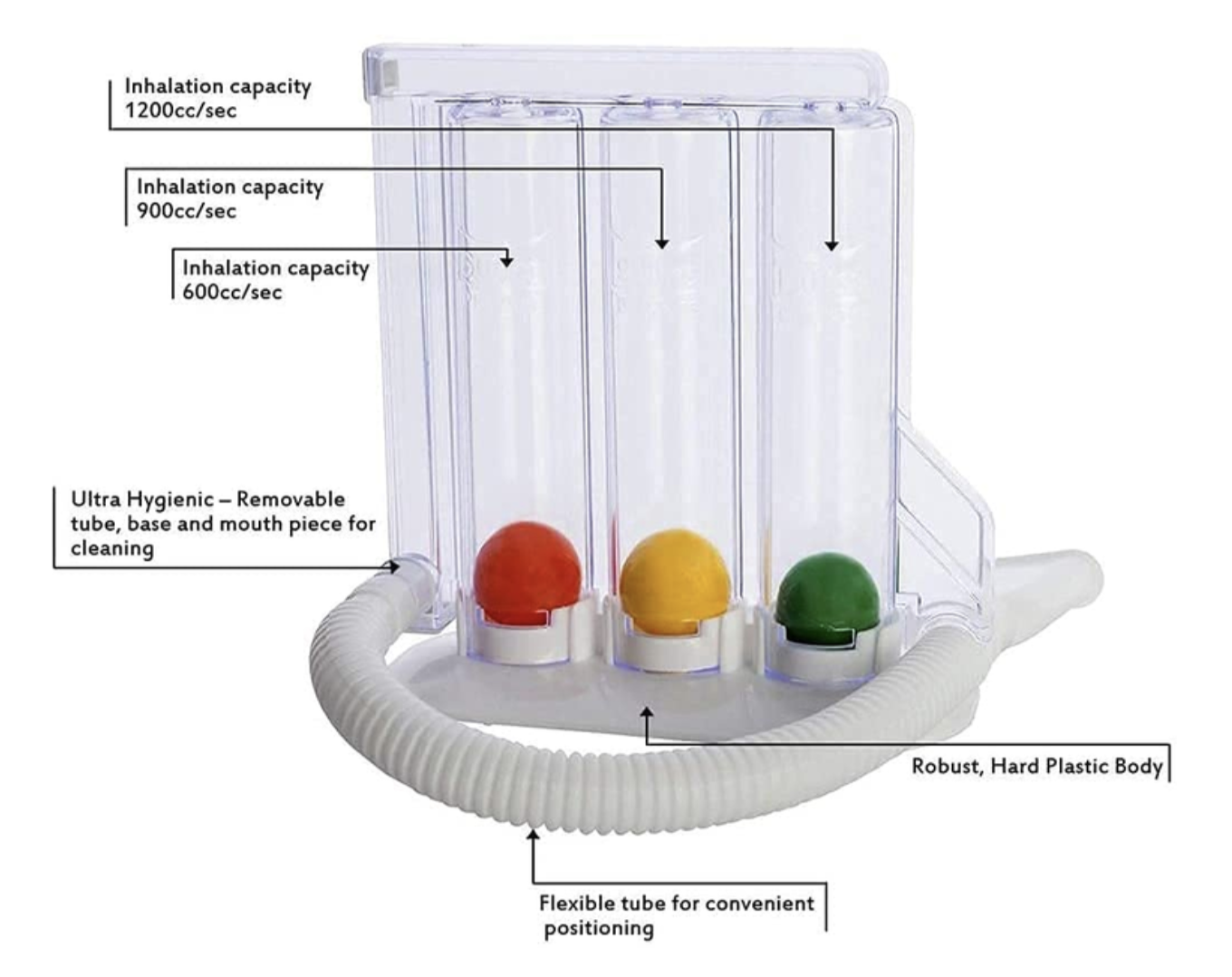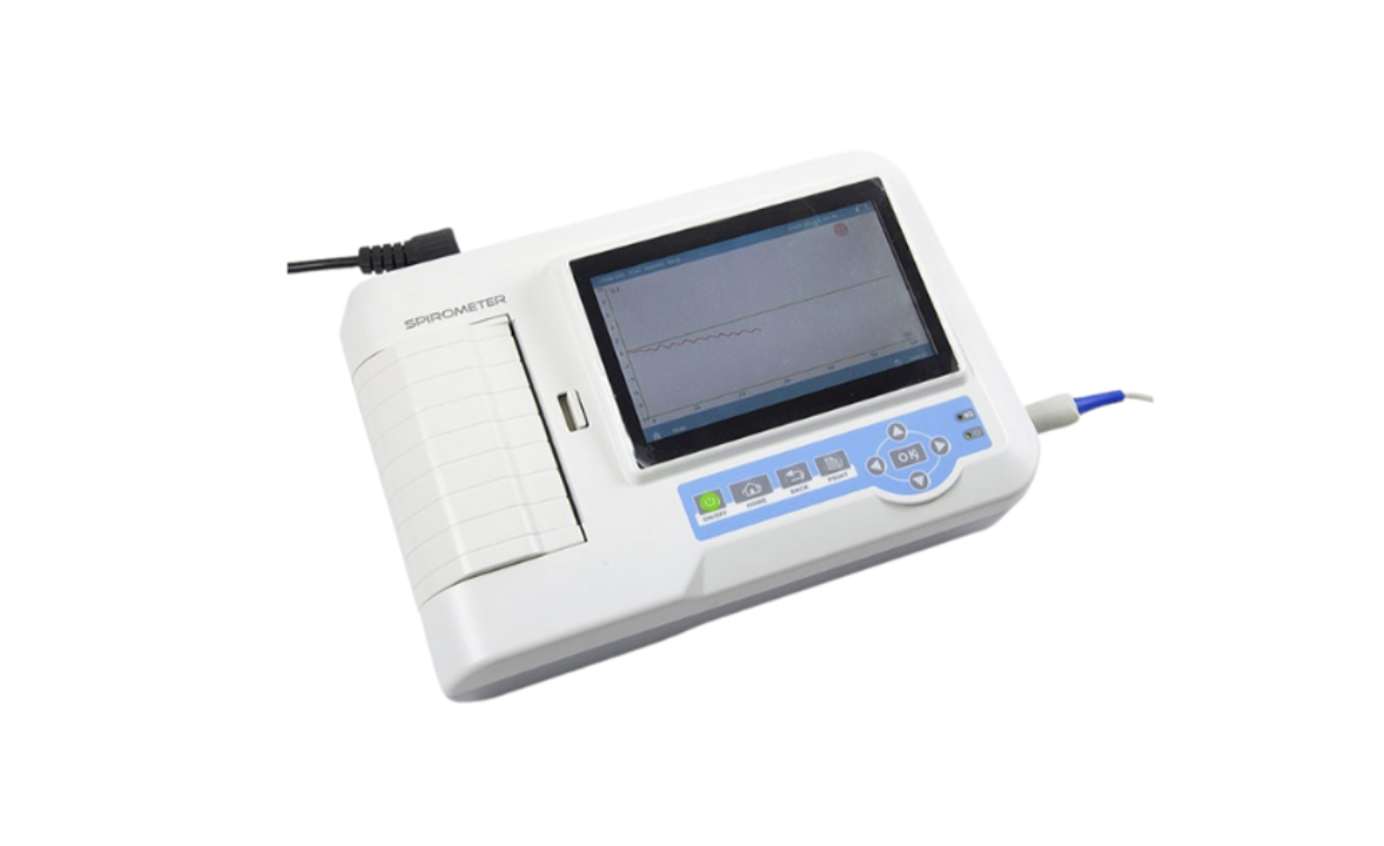What is a Spirometer?


An incentive spirometer is a simple plastic device designed to help you exercise your lungs. Doctors often recommend using it after surgery, an illness, or an injury to the chest or abdomen.
Regular use helps keep your lungs healthy by expanding them fully, improving strength, keeping them inflated, and clearing out mucus or secretions. It’s especially helpful if your oxygen levels drop after surgery or a serious illness, as it supports your lungs in returning to normal function. For detailed information on spirometer prices and available brands, individuals can explore Medikabazaar.
How to Use a Spirometer
Your healthcare provider has set a marker for you. The aim is to keep the blue piston in the main chamber at that mark for as long as possible with each breath. Follow these steps:
- Sit upright and hold the spirometer in your hands.
- Take a normal breath in and out to relax.
- Place the mouthpiece in your mouth, sealing it with your lips.
- Slowly breathe in through the mouthpiece, as if sipping through a straw.
- Keep the small range indicator in the target zone as you inhale.
- Breathe in until the piston reaches your set mark.
- Hold your breath for about 3 seconds, then exhale normally.
- Repeat as advised, usually around 10 breaths every hour.
How to Use a 3 Ball Incentive Spirometer
Sit upright and hold the spirometer in a steady, upright position.
Take 3–4 slow, deep breaths in and out to relax before starting.
Place the mouthpiece in your mouth and seal it with your lips.
Exhale fully, emptying your lungs.
Inhale slowly and deeply through the mouthpiece, expanding your lungs. The balls inside the spirometer will rise try to raise all three.
Hold your breath for 3–5 seconds to keep the balls elevated, then remove the mouthpiece and exhale slowly through your nose.
Repeat for 10 breaths, pausing after every 3–4 breaths to avoid feeling lightheaded.
Use the spirometer every 2 hours while you’re awake.
Spirometer Uses in Health and Rehabilitation
A spirometer is widely used to support lung health and recovery. It helps monitor breathing capacity, strengthen the lungs, and improve oxygen flow in the body. Doctors often recommend it after surgery, chest or abdominal injuries, or during recovery from respiratory illnesses. Regular use can prevent complications like pneumonia, clear mucus from the lungs, and aid rehabilitation by keeping the lungs active and healthy.
How to Clean and Maintain a Spirometer
After each use, wash the spirometer mouthpiece with warm water and soap. If you’re using a disposable mouthpiece, wait at least 24 hours before reusing it.
It’s normal to feel some discomfort while strengthening your lungs with an incentive spirometer. If you’ve had chest or abdominal surgery, deep breaths can be painful holding a pillow firmly against your incision may help ease the discomfort.
Always follow the guidance given by your doctor or respiratory therapist, and reach out to them if you face any difficulty or have questions while using the spirometer.
Why Use a Spirometer After Surgery?
You might find it helpful to use an incentive spirometer when you experience a sudden pain episode, especially if the pain is in your chest, back, or shoulders. Pain, particularly intense pain, often causes us to take shorter, shallower breaths without realizing it, which can affect lung function. Using the incentive spirometer encourages deeper, fuller breaths, helping to keep your lungs active and healthy.
In some cases, healthcare providers may also recommend using the spirometer both before and after surgery. This helps prepare your lungs for the procedure and aids in recovery afterward, reducing the risk of complications such as lung congestion or infections. Regular use can make a noticeable difference in maintaining proper breathing and overall lung health, even when discomfort or pain is present.
Common Mistakes in Spirometer Usage
- Slouching or lying down while using the device can prevent your lungs from fully expanding. Always sit upright to get the most benefit.
- Many people inhale too fast, which reduces the effectiveness. Aim for slow, deep breaths to fully inflate your lungs.
- After inhaling, it’s important to hold your breath for a few seconds to help your lungs expand properly. Skipping this step limits the benefit.
- Using the spirometer only occasionally won’t improve lung function. Regular, scheduled practice is key.
- Pain can make you take shallow breaths. Always try to use the device even if it feels slightly uncomfortable, but stop if the pain worsens and consult your doctor.
- Ensure the mouthpiece is properly sealed with your lips. Air leaks can reduce the device’s effectiveness.
- Failing to wash or dry the mouthpiece can lead to infections. Clean it as instructed after each use.
Related Products

Fastest by 13th Jan
COD
Niscomed Spirometer with Printer
₹59,150
₹55,010 with NISCO7

Fastest by 18th Jan
COD
Spirosafe Spirometry Filter
₹69
₹735% OFF
₹65 with MBFIRST

5
Fastest by 12th Jan
COD
Venticare Spirometer
₹60

5
Fastest by 9th Jan
COD
Niscomed Handheld Spirometer with Software
₹18,356
₹17,072 with NISCO7

Fastest by 9th Jan
COD
RMS PC Based Spirometer
₹33,600
₹31,248 with RADIOLOGY

FAQs









